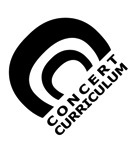School Benefits

Orchestras, performing arts organizations, and science institutions, often exist within close proximity to schools with whom they would love to connect, but lack a means for genuine partnership. The Concert Curriculum provides the means.
With superlative arts learning, extended collaboration with established artists and scientists, and unprecedented participation in high-level music-making, the Concert Curriculum enhances student and school performance in a number of ways.
A growing body of research indicates that students involved in the arts perform better academically than students not involved in the arts. Indeed, the results of a rigorous, controlled impact evaluation of the Concert Curriculum conducted by researchers at the Harvard Graduate School of Education and the New York University Psychology Department confirmed that, relative to students at a matched comparison school, those in the Concert Curriculum showed greater increases in both student-reported and teacher-reported grades across the year of the program, with significantly greater increases in science, math, and overall academic competence. The results of their evaluation are posted online HERE.
The Concert Curriculum is a whole school, whole student, interdisciplinary intervention, with positive effects radiating in many directions. The extraordinary performance of An Orchestra’s Guide To The Young Person by students from the Philip Schuyler Elementary School, an inner-city school in Albany, New York, was a dramatic illustration. Many of the students lived in the shadow of Albany’s historic Palace Theater but had never been inside. The program’s components – from standards-based curriculum units, to close collaboration with members of the Albany Symphony Orchestra – worked like blades of a propeller, moving the class forwards, and lifting it up and towards the ambitious goal of a professional-level performance. Any doubt in anyone’s mind – most importantly, in the students’ own minds – regarding their genuine potential, was put to rest once and for all with their magnificent, final performance in the Palace Theater.
In An Orchestra's Guide To The Universe, students are challenged at accelerated levels in both music and science. As demonstrated by the whole grades of Berwyn Heights Elementary School students who participated in a program in Maryland, the students excel. While the program facilitates memorization, more importantly, it is a conduit to the “big issues” that inspire them most. That they live with these issues in the form of music they enjoy, rehearse, and perform, and throughout an interdisciplinary curricula, in numerous discussions, in multiple classrooms, with a variety of teachers and professional collaborators, and with an ambitious goal propelling them forward, all conspire to fortify their interest. And, by the program’s conclusion, their musical and academic levels have soared.
